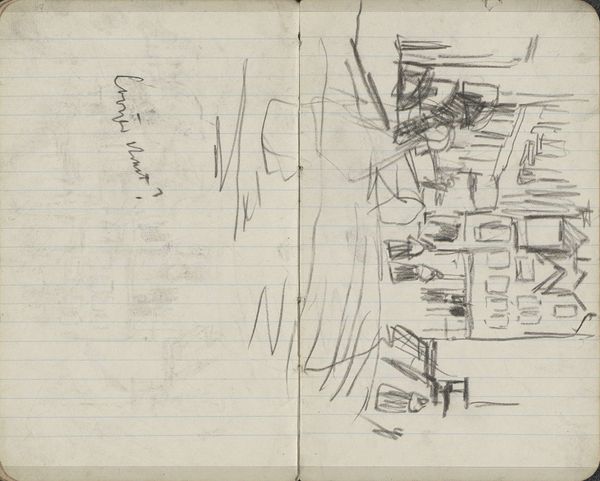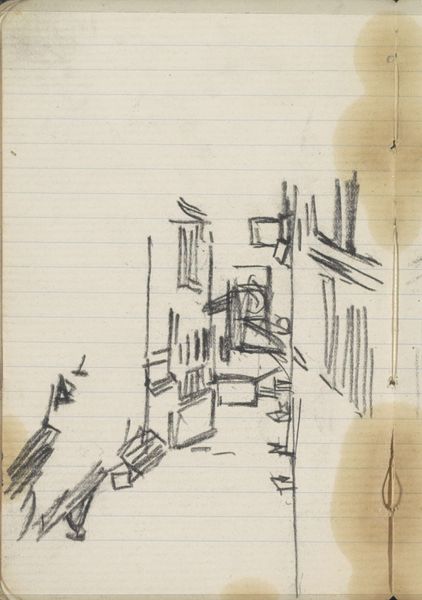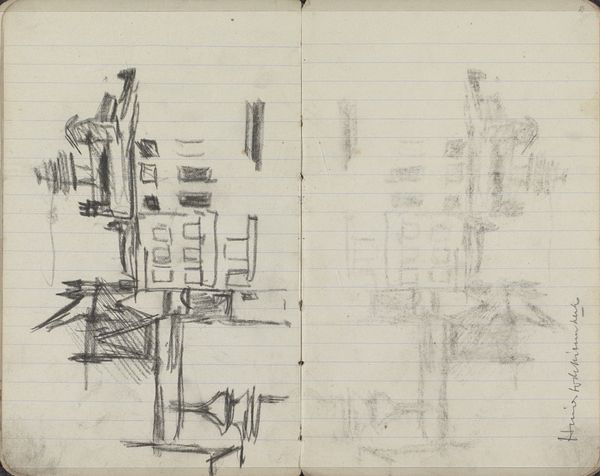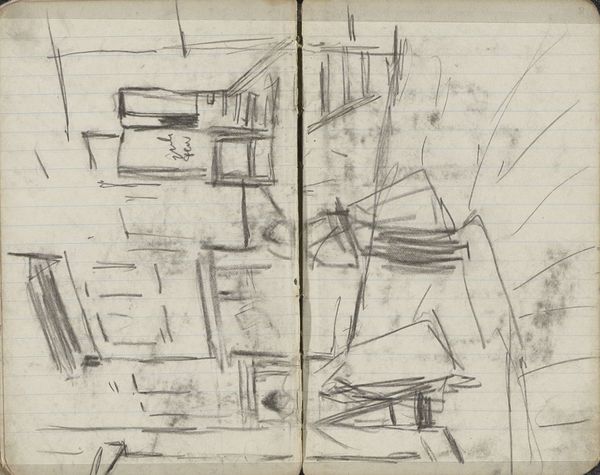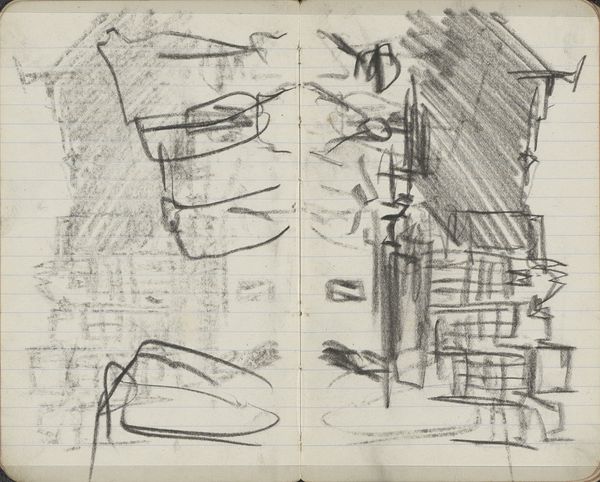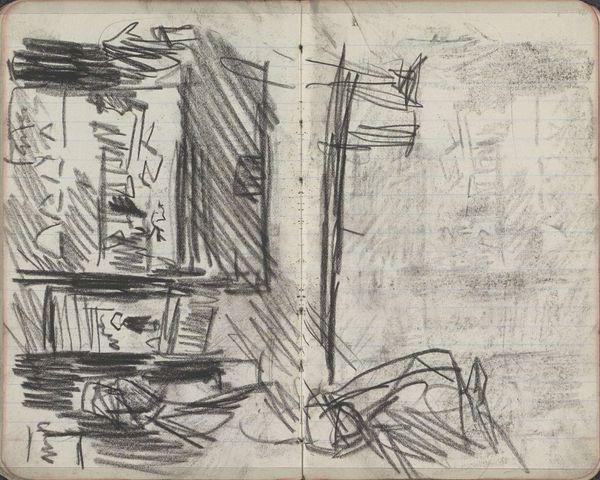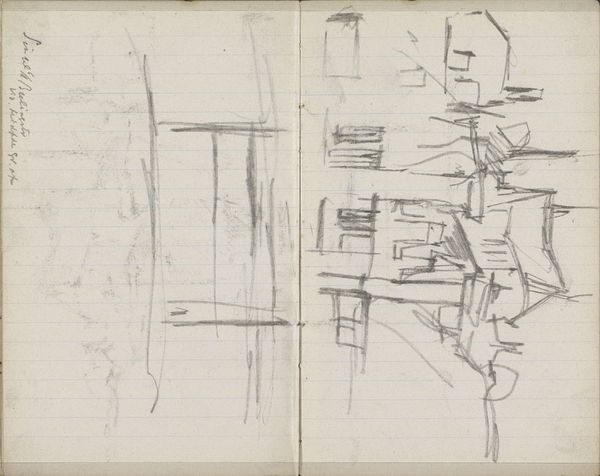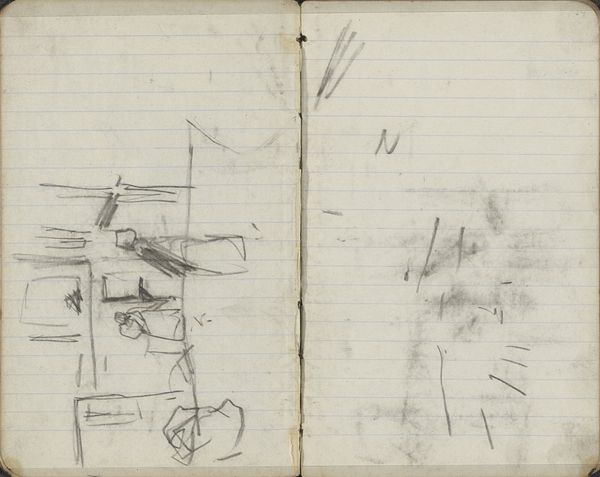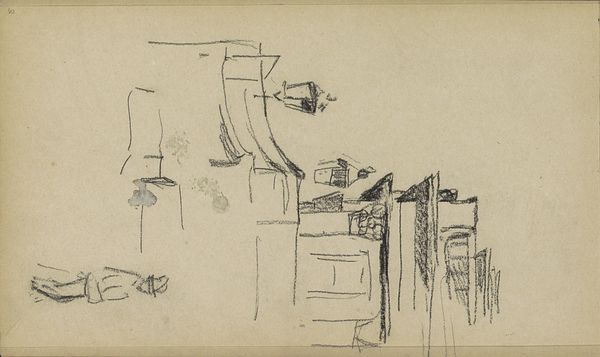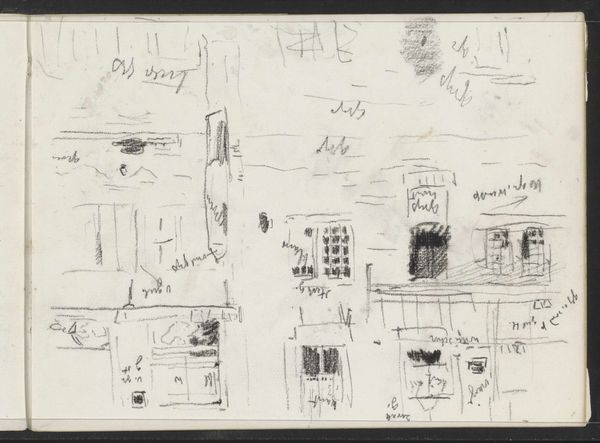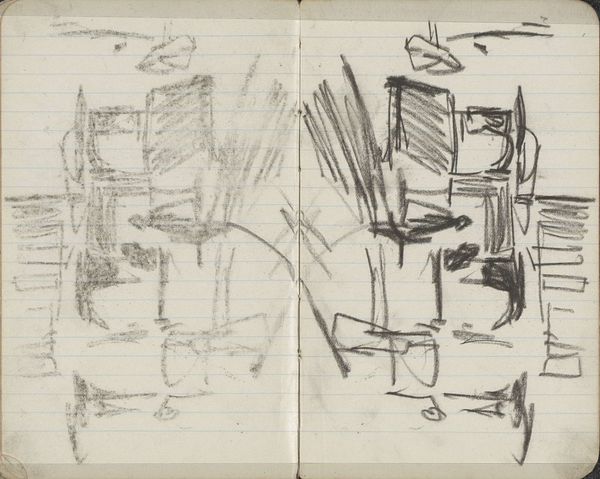
Pui van een winkel op de Nieuwendijk in Amsterdam 1892 - 1900
0:00
0:00
Copyright: Rijks Museum: Open Domain
Curator: Welcome. Today, we're looking at "Pui van een winkel op de Nieuwendijk in Amsterdam," a sketch created by George Hendrik Breitner between 1892 and 1900. It is a pencil drawing showcasing a shopfront on the Nieuwendijk. Editor: Oh, instantly I feel that urban buzz—it's like catching a glimpse of Amsterdam life through a rain-streaked window. Raw, immediate. Did he sketch this on the spot? Curator: Very likely. Breitner was known for capturing the energy of city life, a part of a wider movement that emphasized realism. Sketchbooks like these acted as portable studios where urbanity was rendered visible. The use of a drawing highlights an informal setting removed from officialdom, as he explored urbanity in its least mediatized version. Editor: You know, the composition, or lack of rigid composition rather, is what grabs me. It feels like he's not trying to sell me a pretty picture, but showing me the sheer messy vitality of the place. Curator: Exactly. Breitner’s connection with the streets resonates with how social changes were shaping art, emphasizing modern experience and everyday scenes. Breitner himself stated wanting to get the feeling of "something that I see and that strikes me" in his art. Editor: And there's a sense of temporality, you know? A here-and-now quality, as if he jotted this down in a spare moment between rain showers and trams. Is that what appealed to people? Curator: In a way, yes. He provided candid scenes in which modern social relations of class, gender, and commerce are rendered apparent and relatable through their immediacy and informal representation. Editor: It's just... alive. Unlike some posed portrait or landscape. It reflects the democratization of art, and, to me at least, it echoes that feeling of living in a capital. But there is a part of it that feels… unfinished. Like a fragment of something bigger? Curator: That unfinished aspect makes us consider how art and life were seen as entangled, showing how fleeting encounters shape identity in these dynamic cities. Editor: True. It’s as if you could almost smell the damp pavement. Well, I'm utterly transported. Thanks for the insightful contextualisation. Curator: And thanks for adding to the feel! It enriches our understanding, blending historical depth with subjective connection to this snapshot of urban history.
Comments
No comments
Be the first to comment and join the conversation on the ultimate creative platform.
